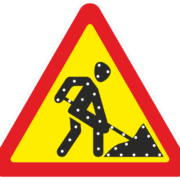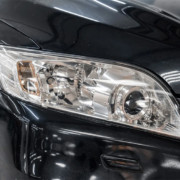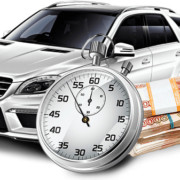Порше, Фердинанд
Содержание:
Early career
The Lohner-Porsche Mixte Hybrid
In 1898, Porsche joined the Vienna-based factory Jakob Lohner & Company, which produced coaches for Emperor Franz Joseph I of Austria as well as for the monarchs of the UK, Sweden, and Romania. Jakob Lohner had begun construction of automobiles in 1896 under Ludwig Lohner in the trans-Danubian suburb of Floridsdorf. Their first design was the Egger-Lohner vehicle (also referred to as the C.2 Phaeton). First unveiled in Vienna, Austria, on 26 June 1898, Porsche had engraved the code «P1» (standing for Porsche, number one, signifying Ferdinand Porsche’s first design) onto all the key components.
The Egger-Lohner was a carriage-like car driven by two electric motors within the front wheel hubs, powered by batteries. This drive train construction was easily expanded to four-wheel drive, by mounting two more electric motors to the rear wheels, and a four-motor example was ordered by Englishman E. W. Hart in 1900. In December that year, the car was displayed at the Paris World Exhibition under the name Toujours-Contente. Even though this one-off vehicle had been commissioned for the purposes of racing and record-breaking, its 1,800 kg (4,000 lb) of lead–acid batteries was a severe shortcoming . Though it «showed wonderful speed when it was allowed to sprint»,[citation needed] the weight of the batteries rendered it slow to climb hills. It also suffered from limited range due to limited battery life.
Still employed by Lohner, Porsche introduced the «Lohner-Porsche Mixte Hybrid» in 1901: instead of a massive battery-pack, an internal combustion engine built by the German firm Daimler drove a generator which in turn drove the electric wheel hub motors. As a backup a small battery pack was fitted. This is the first petroleum-electric hybrid vehicle on record. Since sufficiently reliable gears and couplings were not available at the time, he chose to make it a series-hybrid, an arrangement now more common in diesel-electric or turbo-electric railway locomotives than in automobiles.
Though over 300 Lohner-Porsche chassis were sold up to 1906, most of them were two-wheel drive; either front- or rear-wheel driven trucks, buses and fire-engines. Some four wheel drive buses were produced, but no four wheel drive automobiles.
The vehicles achieved speeds of up to 56 kilometres per hour (35 mph), broke several Austrian speed records, and also won the Exelberg Rally in 1901, with Porsche himself driving a front-wheel drive hybrid. It was later upgraded with more powerful engines from Daimler and Panhard, which proved to be enough to gain more speed records. In 1905 Porsche was awarded the Pötting prize as Austria’s most outstanding automotive engineer.
In 1902 he was drafted into military service. He served as a chauffeur to Archduke Franz Ferdinand of Austria, the crown prince of Austria whose assassination sparked World War I a decade later.
Views on labor
Porsche visited Henry Ford’s operation in Detroit many times where he learned the importance of productivity. There he learned to monitor work. He was also surprised at how the workers and the managers treated each other as equals; even he, as a visiting dignitary, had to carry his own tray in the cafeteria and eat with the workers.
The need to increase productivity became an obsession for him. Conventional methods for increasing productivity include longer working hours, a faster rate of work, and new labour-saving techniques. Originally the Volkswagen project was to be a collaboration of the existing German auto manufacturers, but they bowed out of the project, and a complete workforce was needed. The Volkswagen plant was completed in 1938 after Italian labor was brought in. Volkswagen, under Ferdinand Porsche, profited from forced labour. This included a large number of Soviets. By early 1945, German nationals only made up 10% of Volkswagen’s workforce.
Работа над своим автомобилем.
В начале 30-х годов у Фердинанда новая цель – он начал заниматься созданием своего, в будущем, самого знаменитого детища, а именно — народного автомобиля. Вначале заказ на создание дешевого автомобиля ему дала мотоциклетная компания Zundapp. Увы, из-за отсутствия средств этот проект был свернут. Но после того как на политическом небосклоне появились национал-социалисты, то проект дешевого автомобиля для народа вновь был вынут из дальних ящиков. Фердинанд в 1934 году озвучил свою идею создать Volks-Wagen. Эта мысль понравилась властям, и они поддержали Фердинанда.. Фюрер, во время выступлений кричал толпе: «Германским рабочим отныне не нужно будет добираться пешком до работы. Ведь благодаря национал-социализму у каждого рабочего будет собственный автомобиль».
Уже в 1935 году Порше показал свои первые ходовые экземпляры автомобиля, а в следующем году начали строительство завода по выпуску этой модели. Интересно то, что для создания автомобилей и постройку завода деньги собирались с обычного народа. Разработанная национал-социалистами программа состояла в том, что еженедельно каждый рабочий будет перечислять 5 марок на специальный счет. Уже через три года и восемь месяцев у него накапливалось бы 990 марок, за которые он получал бы автомобиль под названием KdF (в переводе — «сила через радость»).

Более 300 000 жителей Германии поверили в обещания фюрера, и надеялись, что за 990 марок новая власть Германии даст им машину. Увы, надеждам на светлое автомобильное будущее народа так и не суждено было сбыться. Через несколько лет началась Вторая мировая, и несколько сотен KDF, которые таки успели собрать на новых заводах, были переданы руководителям Третьего Рейха. После окончания войны очень многие вкладчики потребовали свои автомобили от концерна Volkswagen, на которые таки было отдано самые 990 марок. Но получить автомобили так никому и не удалось, единственное, что смог предоставить обманутым вкладчикам Volkswagen – это скидка на другие автомобили.
Стоит отметить, что тогда планировались невиданные масштабы производства «Жуков» — 1 миллион машин в год. Чтобы выйти на такой уровень Порше понадобилась консультация по налаживанию массового производства. Для этого он отправился за океан к Генри Форду — другому автомобильному гению. Тогда изобретатель конвейера сказал: «Если кому-то удастся построить автомобиль дешевле и лучше, чем я, то так мне и надо…». После поездки Порше, вместе с передовыми технологиями. привез из Детройта компанию и специалистов, которые тут же взялись за дело.
Очень быстро было собрано 33 «жучка». Интересно то, что имя «Жук». Автомобиль получил от одного американского репортера. Бедняга даже не подозревал, что запатентуй он это название, то стал бы миллионером.
Construction Bureau at Stuttgart
During the 1930s, Stuttgart had already established itself as a center for the automobile industry. Germany’s most important car companies had settled in the region by then. It was thus an ideal location for the new Porsche design company. When Porsche senior opened his offices in April 1931, his son Ferry (then age 21) was by his side. The firm was called «Dr. Ing. h.c. F. Porsche GmbH Konstructionsbüro für Motoren, Fahrzeuge, Luftfahrzeuge und Wasserfahrzeugbau», meaning that Ferdinand Porsche’s firm specialized in construction and consultation for engines, automobiles, airplanes, and motorboats. Porsche GmbH was founded in 1931 by Adolf Rosenberger, Ferdinand Porsche and Dr. Anton Piëch. While Rosenberger was the financial backer, he also brought technical knowledge and racing skill to the equation. Father and son were accompanied by renowned engineers.
During the early 1930s, Germany’s economic crisis was at its peak. The country was about to be politically dominated by the National Socialists, who were about to take the government belligerently. In addition to the financial and political crises, Porsche also faced a lack in personnel, altogether greatly limiting the company’s prospects initially.
Nevertheless, Porsche soon obtained contracts from important German automotive firms, such as Wanderer, Auto Union, Zwickau, Zündapp and, starting in 1933, the new German National Socialist regime. Some of these projects had historical impact, such as the mid-engine Auto Union Silver Arrow race cars, designed by Porsche.
By those years, a newspaper expressed that «in the automobile world, the name Porsche deserves a monument.»
Ferry Porsche, at the time, managed a group of departments ranging from design to customer relationship management. They were: «controlling of testing», «coordinating of the design engineers», and «keeping good relations with clients». In 1935, Ferry married Dorothea Reitz, whom he had first met in the corridors of Daimler-Benz, years before. The couple had four children: Ferdinand Alexander (born 1935), Gerhard (born 1938), Hans-Peter (born 1940), and Wolfgang (born 1943), and remained married until her death.
In 1938, when his father moved to the new Volkswagen plant at Wolfsburg, Ferry became deputy manager of the Stuttgart bureau and relocated the design departments to Stuttgart-Zuffenhausen.
Volkswagen
Ferdinand Porsche’s old yearning had been to create a small compact car which may be conceived as such «from scratch» (instead of a version derived of an existing sedan). Finally, the design work began at their familial residence in Stuttgart on Feuerbacher Weg. Therefore, Ferry Porsche had complete access to help his father, intervening on important parts of the project. The work had originally been supported by Zündapp, until backing away soon after due to commercial reasons.
Nonetheless, the Nazis accepted the project on 22 June 1934, interested in producing «an affordable car for the German family». Originally, it was called Porsche (Model) 60 but it was soon officially renamed as the KdF-Wagen or Volkswagen (people’s car).
In the family’s garage at Stuttgart, three prototypes were built.
In 1939, when the Volkswagen factory opened in Wolfsburg, Porsche senior became its general manager. (along with an officer from the Nazi party).
Auto Union and Wanderer
Adolf Hitler had also decided to promote German race cars at the Grand Prix Motor Racing competitions. Therefore, the government had called for a concourse of the state-of-the-art racers of the time. Daimler-Benz easily won a bid. When Wanderer applied, it was rejected. Wanderer resorted to the Porsche firm.
In 1932, Ferdinand Porsche met with Adolf Hitler personally and their bid was finally accepted. Ferry Porsche took part in the conception and construction of those race cars, and was also responsible for the general organization of the workshop and the testing of units. In 1933, their first race car was developed with a 4.5 litre V-16 engine and an aluminum framework.
In 1934, Wanderer and others merged to form Auto Union, and the senior Porsche became the chief designer of their race cars. Both racing teams, Daimler-Benz and Auto Union, were also used for political propaganda by the National Socialists. They overwhelmingly dominated all the competitions of the 1930s. In 1938, Ferdinand Porsche senior left the Auto Union racing team when his contract expired.
Память
Частный музей Porsche в Гмюнде, Австрия
В маленьком австрийском городе Гмюнд в Каринтии, где сохранились крепостные ворота, старый замок и средневековый город окруженный Альпами, открыт необычный музей. В частном музее Хельмута Пфейхофера собрана отличная коллекция автомобилей Porsche. В этом городе был построен первый автомобиль Porsche, изготовленный основателем компании Фердинандом Порше.
Музей Porsche в Штутгарте, Германия
Первый музей автомобилей марки «Порше» начал свою работу при головном офисе компании в немецком Штутгарте еще в 1976 году. Экспозиция, расположенная в бывшем мотостроительном цеху автозавода, занимала 620 кв. м. и насчитывала несколько десятков экспонатов. Из-за ограниченной площади лишь 20 из них бесплатно выставлялось на обозрение посетителей. Такое скромное количество предметов из важнейшей вехи в истории автомобилестроения не могло передать значимость творений Фердинанда Порше, не спасало и огромное количество документальных фильмов, рассказывающих о компании. В 2004 году, вняв мольбам недовольных поклонников Порше, совет директоров завода решил возвести новый музейный комплекс – такой же необычный и самобытный, как и автомобили, покидающие конвейер. В январе 2009 года музей, строительство которого обошлось в 100 миллионов евро, широко распахнул свои двери толпам изумленных автолюбителей. Ультрасовременное здание напоминает прекрасных железных коней, скрытых в его глубинах, кажется, что оно парит в воздухе, сопротивляясь силе земного притяжения с такой же легкостью, как автомобили Porsche соревнуются с ветром. На территории штутгартского музея, занимающего уже 56 тысяч кв. м., сегодня находится четыре с половиной сотни экспонатов. Восемь десятков автомобилей, от первых Porsche 356 и 356 SL купе 1950 года выпуска, способных развить скорость в 160 км/ч, до современного Porshe 997, достигающего 320 км/ч, пребывают в полностью рабочем состоянии и даже принимают участие в гонках и автопробегах.
Музей Фердинанда Порше во Вратиславице-над-Нисоу, Чехия
В 2014 году в пригороде северного чешского города Либерца под названием Вратиславице-над-Нисоу, месте рождения знаменитого конструктора, открылся еще один музей Порше. Сначала на родине Фердинанда была только выставка, посвященная его творениям, она размещалась в местном культурном центре. Но в 2013 году 150 местных активистов обратились к властям с петицией убрать из города все упоминания о связи с основателем прославленной автомобильной компании из-за нацистского прошлого Порше. Выставку быстро свернули, а три раритетных автомобиля, экспонировавшихся на ней, были вывезены представителями завода. Однако не прошло и года, как владелец вратиславицкой пивоварни Милан Бумба развернул новую кампанию – почти втрое больше жителей просили вернуть в город память о его знаменитом уроженце, создав новый музей. В результате 1 мая 2014 года после торжественного парада самых массовых автомобилей в истории – колоритных «Жуков» – коллекция ретро-авто, уже имеющаяся во владении пивовара-активиста, превратилась в музейный комплекс.
Return to Stuttgart
The Porsche family returned to Stuttgart in 1949 not knowing how to restart their business. The banks would not give them credit, as the company’s plant was still under American embargo and could not serve as collateral. So Ferry Porsche took one of the limited series 356 models from Gmünd and visited Volkswagen dealers to raise some orders. He asked the dealers to pay for the ordered cars in advance.
The series production version made in Stuttgart had a steel body, welded to the central-tube platform chassis, instead of the aluminium body used in the initial limited Gmünd-made series. When Ferry Porsche resurrected the company he counted on series production figures of about 1,500. More than 78,000 Porsche 356s were manufactured in the following 17 years.
Porsche was later contracted by Volkswagen for additional consulting work and received a royalty on every Volkswagen Type I (Beetle) car manufactured. This provided Porsche with a comfortable income as more than 20 million Type I were built.
In November 1950, Porsche visited the Wolfsburg Volkswagen factory for the first time since the end of World War II. Porsche spent his visit chatting with Volkswagen president Heinrich Nordhoff about the future of VW Beetles, which were already being produced in large numbers.
A few weeks later, Porsche suffered a stroke. He did not fully recover, and died on 30 January 1951.
In 1996, Porsche was inducted into the International Motorsports Hall of Fame and in 1999 posthumously won the award of Car Engineer of the Century.
Later years
In 1989, Ferdinand Porsche retired definitively from the activity, returning to his cherished Austrian farm at Zell am See.
Later, one of his last visited events was the launching of a new model, the Porsche 911 Carrera Cabriolet. It was based on the old 356, with a 300 hp 6-cylinder water-cooled engine.
He also assisted in the large celebration of the 30 years of the Porsche 911 which took place at Stuttgart and Ludwigsburg. Despite being in an unhealthy condition, he signed autographs and drove through a street of 500 911s. He supported himself with a cane and was wearing a straw hat.
Ferdinand Porsche died 74 days short of the 50th anniversary of the company, at the age of 88, on 27 March 1998, at the farm in Zell am See, Austria. He was buried there at the Schüttgut church, beside his parents, his wife Dorothea and Anton Piëch. Porsche AG conducted a memorial service soon after in Stuttgart.
Move to Stuttgart
In 1923, the family moved to Stuttgart, due to senior Ferdinand Porsche’s unrest about the squandering financial destiny of Austro-Daimler. He joined the Daimler Motoren Gesellschaft at Stuttgart-Untertürkheim (where the design department from the whole company was concentrated). Soon, he achieved the position of technical director.
Meanwhile, Ferry Porsche received consent from the company to stay at the plant together with his father because of his increasing interest in design issues. The local town authorities endorsed a special permission for him to drive, even at 16 years of age.
Ferdinand Porsche senior enjoyed success particularly with his racing cars which excelled at the race tracks. His personal preference for designing compact cars differed with the current policies of (now merged) Daimler-Benz, who were in favor of more luxurious Mercedes-Benz models.
So, in 1929, Daimler-Benz began to question Porsche’s work seriously and halted it suddenly. He worked temporarily as the technical director of Steyr AG in Austria; nonetheless, he soon decided to open a consulting office of automobile design, again at Stuttgart.
At the same time, after finishing school, Ferry Porsche was residing at Stuttgart where he began working for Bosch Company in 1928; this was to add depth to his interest in automobile engineering. In 1930, he was taking additional lessons in physics and engineering, however he never formally enrolled in any university.
Фердинанд Порше. Биография скончавшегося создателя Porsche 911
Похожие новости
- На 72-м году жизни скончался вокалист британской рок-группы The Troggs Рег Пресли
- В Москве скончался актер легендарного фильма «Д’Артаньян и три мушкетера»
- В Москве скончался автор стихов к песням Крутого и Антонова кинорежиссер Александр Косарев
- На Троекуровском кладбище прошла гражданская панихида по криминальному авторитету Аслану Усояну
Являясь гениальным дизайнером, Фердинанд Александр Порше создал такие легендарные автомобили, как 904 Carrera GTS или Porsche 911. После ухода с руководящей должности в компании Porsche KG, он в 1972 году основал дизайнерскую студию «Porsche Design» и приобрел всемирную известность в качестве частного дизайнера.

Фердинанд Александр Порше родился 11 декабря 1935 года в Штуттгарте и был старшим сыном Дороти и Ферри Порше. Уже в детстве он близко познакомился с миром автомобилей, так как проводил много времени в конструкторских и инженерных бюро, принадлежавших его деду Фердинанду Порше. В 1943 году его семья вместе с компанией Porsche переехала в Австрию, где он ходил в школу в городе Цель-ам-Зее. После возвращения в Штуттгарт в 1950 году он закончил вальдорфскую школу и поступил в высшую школу дизайна в Ульме. В 1958 году Фердинанд Александр Порше начал работать в конструкторском бюро тогдашней компании Dr. Ing. h.c. F. Porsche KG.
Вскоре он доказал свой талант дизайнера, представив формальное направление дизайна наследника модельного ряда 356 в виде прототипа Porsche Type 754. В 1962 году он стал руководителем дизайнерской студии Porsche и спустя год после этого вызвал мировой фурор своей моделью Porsche 901 (соответственно 911). Кроме легковых автомобилей, Фердинанд Александр Порше также занимался разработкой дизайна спортивных автомобилей 60-х годов 20-го века. В число его самых знаменитых проектов входят гоночный болид Формулы 1 Type 804 или Porsche 904 Carrera GTS, который среди автомобильных фанатов вообще считается одним из самых красивых гоночных автомобилей.
С преобразованием компании Porsche KG в акционерное общество в 1971/72 году Фердинанд Александр Порше вместе с другими членами семьи отстранился от оперативного руководства компанией. В качестве акционера и члена наблюдательного совета он в течение многих лет находился рядом с компанией Dr. Ing. h.c. F. Porsche AG и с 1990 по 1993 год был председателем наблюдательного света. В 2005 году он передал свои полномочия члена наблюдательного совета Porsche AG своему сыну Оливеру и стал почетным председателем наблюдательного совета.

В 1972 году Фердинанд Александр Порше основал компанию «Porsche Design Studio» в Штуттгарте, штаб-квартира которой в 1974 году была перенесена в Целль ам Зее в Австрии. В течение последующих десятилетий он разработал многочисленные классические аксессуары для мужчин, как, например, часы, очки и ручки, которые приобрели мировую известность под маркой «Porsche Design». Кроме этого он со своей командой под маркой «Design by F.A. Porsche» выпустил огромное количество промышленных изделий, бытовых приборов и предметов широкого потребления для заказчиков с мировым именем. За свою работу в качестве дизайнера Фердинанд Александр Порше получил многочисленные премии и награды.
Осенью 2003 года Фердинанд Александр Порше и другие акционеры «Porsche Design» вместе с Dr. Ing. h.c. F. Porsche AG основали компанию Porsche Lizenz- und Handelsgesellschaft mbH & Co. KG (PLH). Задачей данной компании является эффективное использование имени Porsche за пределами автомобильной сферы. При этом основной упор делается на марку «Porsche Design», которая за последние годы стала одним из ведущих мировых брендов класса «люкс» с собственной торговой сетью.
опубликовал: Егор Красотин
дата: 05 April 2012 г.
просмотров: 5388
1
Нравится
Добавить в избранное
Добавить комментарий
Все комментарии
Porsche company at Gmnd
After his release, Ferry Porsche attempted to return to Stuttgart but he was barred by the occupation forces. In consequence, in July 1946 he brought all the structure of the company to Gmünd/Carinthia, Austria.
Together with his sister Louise, Ferry took on the management of the company. In the beginning, they also used the workshop to repair cars. Additionally, they commercialized water pumps and lathes.
In time, they obtained two contracts for automobile design. One was for the construction of racecars for the Cisitalia racing team. The other was for the design of their own car, which later became known as the Porsche 356.
Porsche Type 360 — Cisitalia
As a result of Carlo Abarth’s mediation, Ferry Porsche inked a contract with Piero Dusio to produce Grand Prix racing cars again. The new model was called the Porsche 360 Cisitalia, and it was the first to spell out the name of the family’s enterprise. Its design was mostly alike to the preceding pre-war ones, despite being smaller. It had a supercharged mid-mounted engine displacing 1.5 liters and four-wheel drive.
Porsche Type 356
Following his father’s old aspiration, Ferdinand Porsche designed the Porsche 356, with a unique chassis and body while using Volkswagen components. The 356 had an air-cooled, rear-mounted, 4-cylinder engine producing 35 hp. Due to the location of its engine, the car was a little unstable but the balance favored potency and light weight.
An automobile dealer from Zurich ordered the first shipment in the winter of 1947 and production of the automobile began. Under Ferry Porsche’s supervision, the units were built completely by hand at an improvised workshop inside a sawmill at Gmünd.
By June 1948, 50 aluminum-bodied units had been completely assembled. Additionally, 6 frameworks were sent to the Beutler Company at Thun, Switzerland, where they were fitted with cabriolet bodies.
Despite its compact size, the car was popular with wealthy customers. If successful, the 356 would mean Porsche’s final hop out from performing only designing chores for others. Indeed, surprisingly, the 356 remained in production for many years and by 1965 had sold nearly 78,000 units. Additionally, it laid the framework which was followed by the entirety of the successive series of Porsche’s sports cars.









